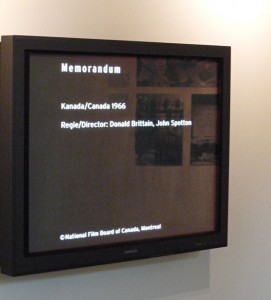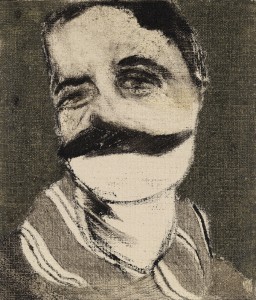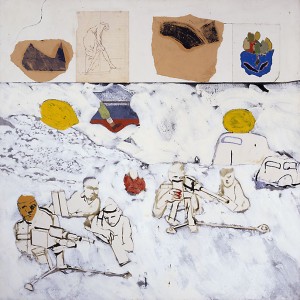 A police siren blares through the last rooms of the permanent exhibition. The source of the alarming noise is a film excerpt being displayed on a large screen.
A police siren blares through the last rooms of the permanent exhibition. The source of the alarming noise is a film excerpt being displayed on a large screen.
This section of the exhibition is about the Frankfurt Auschwitz trial that took place from December 1963 until August 1965. Former SS members of the Auschwitz concentration camp authority were tried for murder or for aiding and abetting murder. The litigation is regarded as a turning point in the way the National Socialist past was dealt with in the new Federal Republic. → continue reading

R.B. Kitaj, Portrait of Aby Warburg, 1958–1962 © R.B. Kitaj Estate
R.B. Kitaj is known for his expressive, strongly-colored paintings and the retrospective at the Jewish Museum does these qualities full justice. Though for me personally, one of the most appealing works was at first unprepossessing. It is very small, barely 15 x 13 cm, in shades of grey – more a study than a painting. The Portrait of Aby Warburg (1958) depicts the pioneer of methodical iconography, who lived from 1866 to 1929. The son of a Hamburg banker, who passed on a career in the family business in order to become an artist and art historian, Warburg was an important inspiration for the painter Kitaj. Warburg studied the afterlife of ancient motifs in Renaissance art, an interest Kitaj shared insofar as he systematically quoted artworks from past eras in his own paintings. → continue reading

R.B. Kitaj, Kennst Du das Land?, 1962 © R.B. Kitaj Estate
A few years ago during a summer spent in Catalonia, I strolled through the port city of Sant Feliu de Guíxols. It is a special place: it was spared the transgressions of the Spanish coast’s building mania due to its fishing industry. It is not merely decorative but in fact successful in a particular industrial branch: producing cork. And here – nominally part of Spain but somehow a place all of its own – R.B. Kitaj and his wife spent the winter of 1953/54. Twenty years later, he bought a house in this town. What did it mean to him, this stubborn region that again and again rebelled against Spanish supremacy? → continue reading
 A police siren blares through the last rooms of the permanent exhibition. The source of the alarming noise is a film excerpt being displayed on a large screen.
A police siren blares through the last rooms of the permanent exhibition. The source of the alarming noise is a film excerpt being displayed on a large screen.
